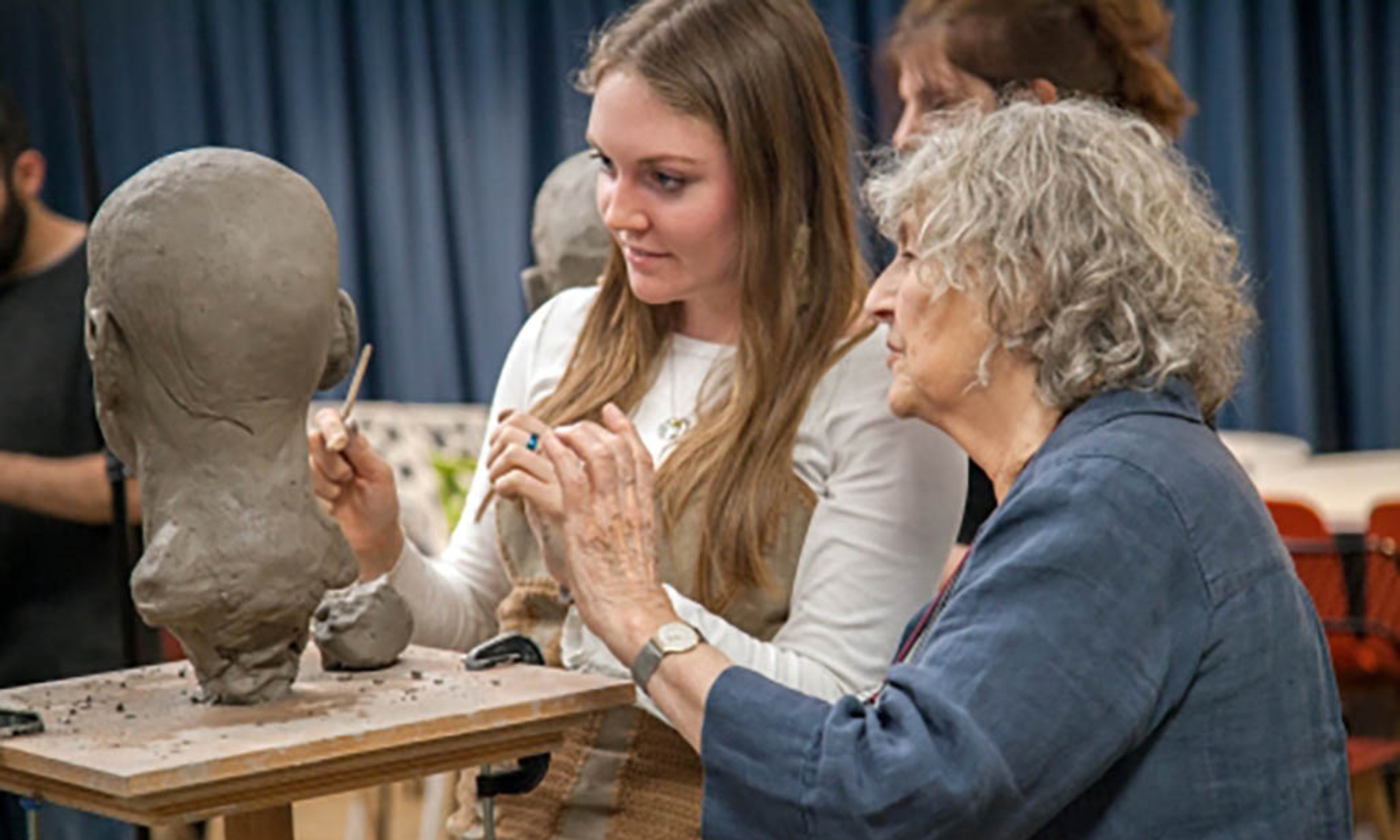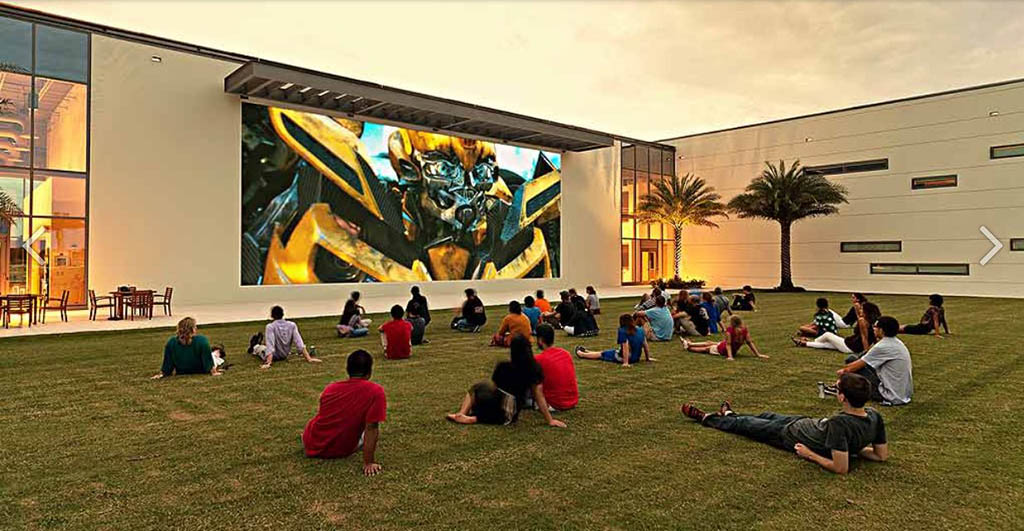Remote Work 2024: Finding The Best Balance Between Home And Office
01.17.24
In just a few years, turbocharged by the pandemic, remote work has become widely established in the VFX industry and is now a preferred option for many visual artists. It has also helped boost the globalization of visual effects work, which in turn has increased the demand for remote workers.
Framestore was one of the VFX studios that succeeded in pivoting quickly in the new environment. Looking back, Framestore CEO Mel Sullivan recalls, “Thanks to our systems team we had an effective, efficient and secure remote working pipeline in place within two weeks of lockdown, and since then it’s mainly been a case of refining and enhancing our work-from-home capabilities.”
During that time, Sullivan says, “We’ve delivered some of the biggest shows on Earth from home – Oscar nominees, record-breaking box-office successes, you name it – so it’s now second nature and certainly isn’t hampering what we do. Like most of the companies operating at our level, we’ve now moved to a hybrid way of working. This has been a question of striking a balance between the improved work-life balance the industry is now enjoying versus the genuine benefits of being surrounded by your peers, being able to connect with each other in real-time and spark those spontaneous insights and conversations that only happen if you’re in the same physical space.”
“Our staff are at the core of Cinesite’s success; everyone is different, and we celebrate that. By allowing individuals to work according to their own working styles, we’ll get the best out of everyone rather than forcing them to conform to another person’s style, at their detriment.”
—Sashka Jankovska, Chief HR Officer, Cinesite
After COVID-19’s arrival, the necessity to maintain social distancing and prioritize employee safety led to a significant shift towards remote work in the VFX industry. During the pandemic, many VFX studios established remote work setups, enabling their artists to continue working on projects from home. Advancements in technology, high-speed internet connections and the availability of powerful remote collaboration tools made this transition possible. Artists could remotely access necessary software, collaborate with colleagues and render their work using cloud-based systems. Among such tools today, Hammerspace delivers a global data environment which spans across data centers and AWS, Azure and Google cloud infrastructure. Frame.io (owned by Adobe) is a leading cloud-based storage platform for video assets and files. LucidLink offers a high-performance cloud file system for distributed workloads, while Seagate’s Lyve Data Services provides data management, recovery and secure migration to any cloud service. Moxion (owned by Autodesk) is a dailies and content-review platform and offers an instant dailies service in HDR, with full Dolby Vision, HDR10 and 4K resolution playback support. The Television Academy for Engineering Development awarded Teradici an Emmy in 2020; it is a leader in “remoting software for performance, security and deployment flexibility.” Acquired in 2021, the firm’s Teradici CAS (Cloud Access Software) is now HP Anyware. MS Teams and Zoom are among the popular tools for communications collaboration.
Key benefits of remote work in the VFX business include increased flexibility, access to global talent and cost savings. Some of the challenges include achieving sufficient collaboration and communication, plus hardware and software requirements, data security and protection of intellectual property.
While remote work has grown tremendously, some studios may still prefer a hybrid approach, combining remote work with in-person collaboration for certain stages of production or specific projects that benefit from on-site interactions. Cinesite offers three different options at its London, Montreal and Vancouver offices – home-based, hybrid-based and office-based. It offers all-team meetings to provide transparency and motivation as well as seasonal opportunities to socialize with colleagues and friends, and it has retained its physical offices for employees in London, Montreal and Vancouver for in-person collaboration and special projects.
Early on, Cinesite shifted to a flexible way of working, embracing workplace shifts made necessary by the pandemic. “After everyone settled into their new work-from-home environment, we quickly realized we could be even more creative and effective in delivering high-quality series and feature film work when adopting a flexible way of working,” notes Cinesite’s Chief HR Officer, Sashka Jankovska. “Our staff are at the core of Cinesite’s success; everyone is different, and we celebrate that. By allowing individuals to work according to their own working styles, we’ll get the best out of everyone, rather than forcing them to conform to another person’s style, at their detriment.”
“Looking ahead to 2024, we are exploring a hybrid approach that will enable our artists to work both in-studio and remotely. The primary driver behind this adjustment is to alleviate ‘work-from-home fatigue,’ encourage and foster team-building and provide better support and integration for new talent into Digital Domain. By combining the best of both worlds, this approach will create an ideal environment for collaboration and creativity while retaining the advantages of remote work.”
—Lala Gavgavian, President and COO, Digital Domain
President and COO of Digital Domain Lala Gavgavian comments, “Our rapid response to the pandemic in 2020 and the shift to a work-from-home paradigm have been among our significant operational achievements at Digital Domain. The evolving WFH setup has expanded our access to global talent without the need for physical relocations to a brick-and-mortar building and allowed us to scale our capacity in ways that were limited prior to the work-from-home success.” She adds, “Looking ahead to 2024, we are exploring a hybrid approach that will enable our artists to work both in-studio and remotely. The primary driver behind this adjustment is to alleviate ‘work-from-home fatigue,’ encourage and foster team-building and provide better support and integration for new talent into Digital Domain. By combining the best of both worlds, this approach will create an ideal environment for collaboration and creativity while retaining the advantages of remote work.”
Hitesh Shah, BOT VFX CEO and Founder, comments, “The discussion of ‘if remote work is in the mix’ is almost gone – most of the attention is on how organizations balance in-office versus remote. Organizations continue to wade through the conflicting needs posed by talent access, talent lifestyle preferences, collaboration needs, training needs and economics.” He adds, “Like most other industries, the VFX industry has gone from large ‘religious’ debates about all in-office or all-remote to everyone finding the balance that works for their situation.” Shah notes that “collaborative content-review software” helps make remote work viable.
In a broader sense, the world is figuring out what types of businesses and industries are okay to work remotely – or not. According to David Lebensfeld, President and VFX Supervisor at Ingenuity Studios. “The VFX industry has gotten comfortable with the idea that remote work is here to stay. It’s interesting though – more workers are returning to the office in some locations more than others. So, for example, Europe has more workers returning to the office. Yet in New York City and Los Angeles, we’re finding that people want to continue working remotely.”
Lebensfeld observes, “Most artists do want the option. I think hybrid and remote work will endure in the VFX industry, if for no other reason than access to talent being key, and remote/hybrid options definitely expand the pool of qualified candidates.” In terms of key software and hardware that facilitate remote work, “There are common tools that everyone uses, including MS Teams and Zoom. We use Teradici to power remote working around the world,” Lebensfeld adds. “Remote work is supported well by the cloud. You can access workstations or storage from anywhere and move workstation demand closer to team member location, such as through AWS or Azure for improved latency speed, which is more or less attached to distance.”
“Europe has more workers returning to the office. Yet in New York City and Los Angeles, we’re finding that people want to continue working remotely. Most artists do want the option. I think hybrid and remote work will endure in the VFX industry, if for no other reason than access to talent being key, and remote/hybrid options definitely expand the pool of qualified candidates.”
—David Lebensfeld, President/VFX Supervisor, Ingenuity Studios
Remote work is having a positive effect on many visual effects artists. “I think it is impacting work/life balance, quality of life and flexibility to handle family needs and work after the kids are sleeping,” Lebensfeld says. “All of this depends on the team member and the project needs at any given time. Sometimes, having work completed at odd hours really benefits a project timeline while still promoting a healthy balance.” He comments, “The hope is that post-strike demand returns to a level that is sustainable for the industry, and we happen to think that the option of remote work allows us to best meet our hiring goals, especially when demand spikes. I don’t think remote work fully replaces how people work together, however. In-person working and team interactions bring added benefits of additional context and relationship-building. I find that mentoring is often easier with in-person dialogue and rapport.”
Gaurav Gupta, CEO of FutureWorks, notes that remote work can bring filmmakers together more quickly and offer “flexibility, speed, cost optimization and competition for the best talent at global scale.” He comments, “Content creation, by its nature, works best when creators are able to collaborate frequently and effectively, where multiple stakeholders can share their ideas quickly and review changes in a qualitative manner. Starting with Smartjog, Aspera and Cinesync in the 2000s, to modern cloud-based applications like Frame.io, Moxion, etc. now, technology has enabled creators to share high-quality audio, video and images.”
The cloud is already essential for much remote work. Gupta explains, “Whether private or public, cloud technologies are being used everywhere in content production; from set to screen, remote work and cloud go hand in hand. I think the industry is now aligned to make The 2030 Vision published by MovieLabs a reality sooner than its stated time frame. Its first principle ‘All assets are created or ingested straight into the cloud and do not need to be moved’ heralds a complete cloud future.”
Just as remote work has enabled globalization, the latter has fed the former. “Netflix has created the first true global studio without borders. Their focus on pushing both technology and creativity in content production at global scale has accelerated the development and adoption of remote working. The flywheel is now spinning faster and faster,” Gupta says.
“For me the most exciting developments are in the area of a Global File System, technologies like Hammerspace enabling seamless movement of data to a location where it’s needed with AI intelligence. I think technologies like these were only available to a select few studios, and now anyone will be able to adopt this. This solves a very important problem for a globally distributed workforce.”
—Gaurav Gupta, CEO, FutureWorks
Gupta adds, “For me the most exciting developments are in the area of a Global File System, technologies like Hammerspace enabling seamless movement of data to a location where it’s needed with AI intelligence. I think technologies like these were only available to a select few studios, and now anyone will be able to adopt this. This solves a very important problem for a globally distributed workforce.”
Still, with all the benefits brought by remote work, the old-fashioned approach is also important. “Being in the office is also vital for our new and early-career artists since they benefit so much from being able to work and learn alongside more experienced creatives,” Sullivan says. “Linked to this is our broader mission to ensure everyone working for Framestore, whether they’re in the U.K., U.S., Canada, India or Australia, can benefit from our unique creative culture and the wealth of training, development and mentoring opportunities we offer.”
The remote workflow has evolved steadily on several fronts since early 2020. Rob Hifle, CEO and Creative Director at Lux Aetena, notes the deep globalization of the workforce occurring in VFX. “Connectivity is continually improving, leading to more global collaboration as well as hybrid working, leveraging talent and expertise from different regions of the world. This will lead to wider representation of backgrounds and experiences across the industry, with the unique and valuable insights that brings.”





